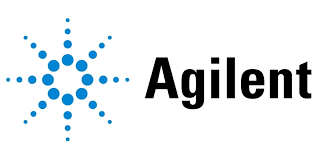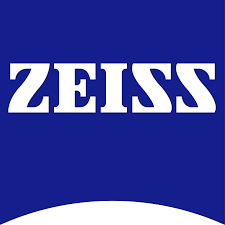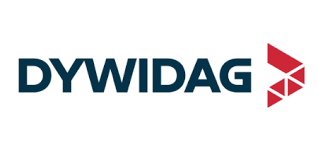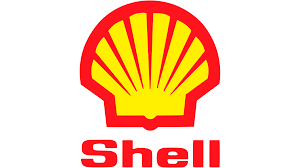Field Erected Cooling Tower Market Report
Published Date: 15 December 2025 | Report Code: field-erected-cooling-tower
Field Erected Cooling Tower Market Size, Share, Industry Trends and Forecast to 2033
This market report provides an in-depth analysis of the Field Erected Cooling Tower market, covering key insights, trends, and data from 2023 to 2033, including market size projections, regional analysis, and industry dynamics.
| Metric | Value |
|---|---|
| Study Period | 2023 - 2033 |
| 2023 Market Size | $3.40 Billion |
| CAGR (2023-2033) | 6.7% |
| 2033 Market Size | $6.62 Billion |
| Top Companies | SPX Cooling Technologies, Baltimore Air Coil Company, Evapco, Inc., Thermal Care, Inc., Twelve Oaks Cooling Towers |
| Last Modified Date | 15 December 2025 |
Field Erected Cooling Tower Market Report (2023 - 2033)
Field Erected Cooling Tower Market Overview
Customize Field Erected Cooling Tower Market Report market research report
- ✔ Get in-depth analysis of Field Erected Cooling Tower market size, growth, and forecasts.
- ✔ Understand Field Erected Cooling Tower's regional dynamics and industry-specific trends.
- ✔ Identify potential applications, end-user demand, and growth segments in Field Erected Cooling Tower
What is the Market Size & CAGR of Field Erected Cooling Tower market in 2023?
Field Erected Cooling Tower Industry Analysis
Field Erected Cooling Tower Market Segmentation and Scope
Tell us your focus area and get a customized research report.
Field Erected Cooling Tower Market Analysis Report by Region
Europe Field Erected Cooling Tower Market Report:
The European market is expected to grow from $0.88 billion in 2023 to $1.72 billion by 2033. Factors driving growth include stringent environmental regulations and growing investment in energy efficiency across various sectors.Asia Pacific Field Erected Cooling Tower Market Report:
In 2023, the Asia Pacific region's market is valued at approximately $0.66 billion, projected to grow to $1.29 billion by 2033. Increasing industrialization, particularly in nations like China and India, drives significant demand for cooling solutions, particularly in thermal power plants and manufacturing sectors.North America Field Erected Cooling Tower Market Report:
North America boasts the largest market share, valued at approximately $1.29 billion in 2023 and growing to $2.52 billion by 2033. The shift towards sustainable energy practices and retrofits in cooling systems spurs demand significantly in this region.South America Field Erected Cooling Tower Market Report:
The South America market is currently valued at around $0.16 billion in 2023, expected to rise to $0.30 billion by 2033. The region shows modest growth, driven by improvements in industrial infrastructure and energy requirements.Middle East & Africa Field Erected Cooling Tower Market Report:
The Middle East and Africa market is projected to increase from $0.40 billion in 2023 to $0.79 billion by 2033, with expansion largely attributed to the growth of the oil and gas sector and a rise in water treatment initiatives in various projects.Tell us your focus area and get a customized research report.
Field Erected Cooling Tower Market Analysis By Type
Global Field-Erected Cooling Tower Market, By Type Market Analysis (2023 - 2033)
Crossflow Cooling Towers represent a significant segment of the market, with a size of about $2.13 billion in 2023, projected to grow to $4.14 billion by 2033, capturing a market share of 62.54%. Counterflow Towers show stable growth from $0.71 billion to $1.39 billion, holding a 20.95% share. Hybrid Cooling Towers are emerging rapidly, expected to grow from $0.56 billion to $1.09 billion, making up 16.51% of the market.
Field Erected Cooling Tower Market Analysis By Application
Global Field-Erected Cooling Tower Market, By Application Market Analysis (2023 - 2033)
The Power Generation sector is a major end-user, with a market size of $1.74 billion in 2023 and reaching $3.39 billion by 2033, accounting for 51.28% of the total market. The Process Industry follows, projected to grow from $0.83 billion to $1.62 billion, with a 24.47% market share. Building Services and Other Industries also contribute alongside increased urbanization trends.
Field Erected Cooling Tower Market Analysis By Material
Global Field-Erected Cooling Tower Market, By Material Market Analysis (2023 - 2033)
Fiberglass Reinforced Plastic (FRP) dominates the market with a size of $2.13 billion in 2023, forecasted to reach $4.14 billion by 2033. Steel (Galvanized and Stainless) towers hold a significant position at $0.71 billion, growing to $1.39 billion. Concrete Cooling Towers present a modest growth path from $0.56 billion to $1.09 billion.
Field Erected Cooling Tower Market Analysis By End User
Global Field-Erected Cooling Tower Market, By End-User Industry Market Analysis (2023 - 2033)
The industrial sector remains the largest end-user of cooling towers with a market size of $2.13 billion in 2023 and reaching $4.14 billion by 2033, capturing 62.54% of the market. The commercial segment, including office buildings and retail, presents a size of $0.71 billion, expected to reach $1.39 billion. Municipal applications also reflect growth, emphasizing the increasing demand for cooling tower solutions.
Field Erected Cooling Tower Market Trends and Future Forecast
Tell us your focus area and get a customized research report.
Global Market Leaders and Top Companies in Field Erected Cooling Tower Industry
SPX Cooling Technologies:
A leading provider of cooling and refrigeration solutions, SPX specializes in the design and manufacture of cooling towers and associated equipment.Baltimore Air Coil Company:
Recognized for innovative cooling solutions, BAC manufactures a variety of cooling towers and heat exchangers.Evapco, Inc.:
Evapco is a global manufacturer dedicated to providing quality cooling solutions, focusing on energy efficiency and sustainability.Thermal Care, Inc.:
Thermal Care offers solutions for cooling water systems, specializing in the engineering and manufacturing of cooling towers.Twelve Oaks Cooling Towers:
A specialized manufacturer of cooling towers, known for delivering custom cooling solutions to various industries.We're grateful to work with incredible clients.









FAQs
What is the market size of field Erected Cooling Tower?
The field-erected cooling tower market is currently valued at $3.4 billion and is projected to grow at a compound annual growth rate (CAGR) of 6.7%. This growth reflects increasing demands in various industrial sectors.
What are the key market players or companies in the field Erected Cooling Tower industry?
Key players in the field-erected cooling tower industry include prominent companies like SPX Cooling Technologies, Baltimore Air Coil Company, and Hamon & C°. These companies dominate the market through innovative technologies and product offerings.
What are the primary factors driving the growth in the field Erected Cooling Tower industry?
Key factors driving growth in the field-erected cooling tower market include industrial expansion, rising energy demands, and technological advancements. Additionally, sustainability initiatives and regulatory frameworks also play a significant role.
Which region is the fastest Growing in the field Erected Cooling Tower?
Asia-Pacific is the fastest-growing region within the market. It is expected to increase from $0.66 billion in 2023 to $1.29 billion by 2033, reflecting a substantial rise in industrial activities and energy consumption.
Does ConsInsights provide customized market report data for the field Erected Cooling Tower industry?
Yes, ConsInsights offers customized market report data tailored to specific needs and preferences. This enables businesses to gain insights aligned with their strategic goals and operational requirements.
What deliverables can I expect from this field Erected Cooling Tower market research project?
Deliverables from our market research project include comprehensive market analysis, detailed profiles of key players, statistical data segmented by region and application, as well as future market trends and forecasts.
What are the market trends of field Erected Cooling Tower?
The market trends for field-erected cooling towers indicate a shift toward hybrid and sustainable cooling solutions, advancements in materials used (like FRP), and a focus on energy efficiency due to regulatory pressures. This trend is expected to shape future market dynamics.
